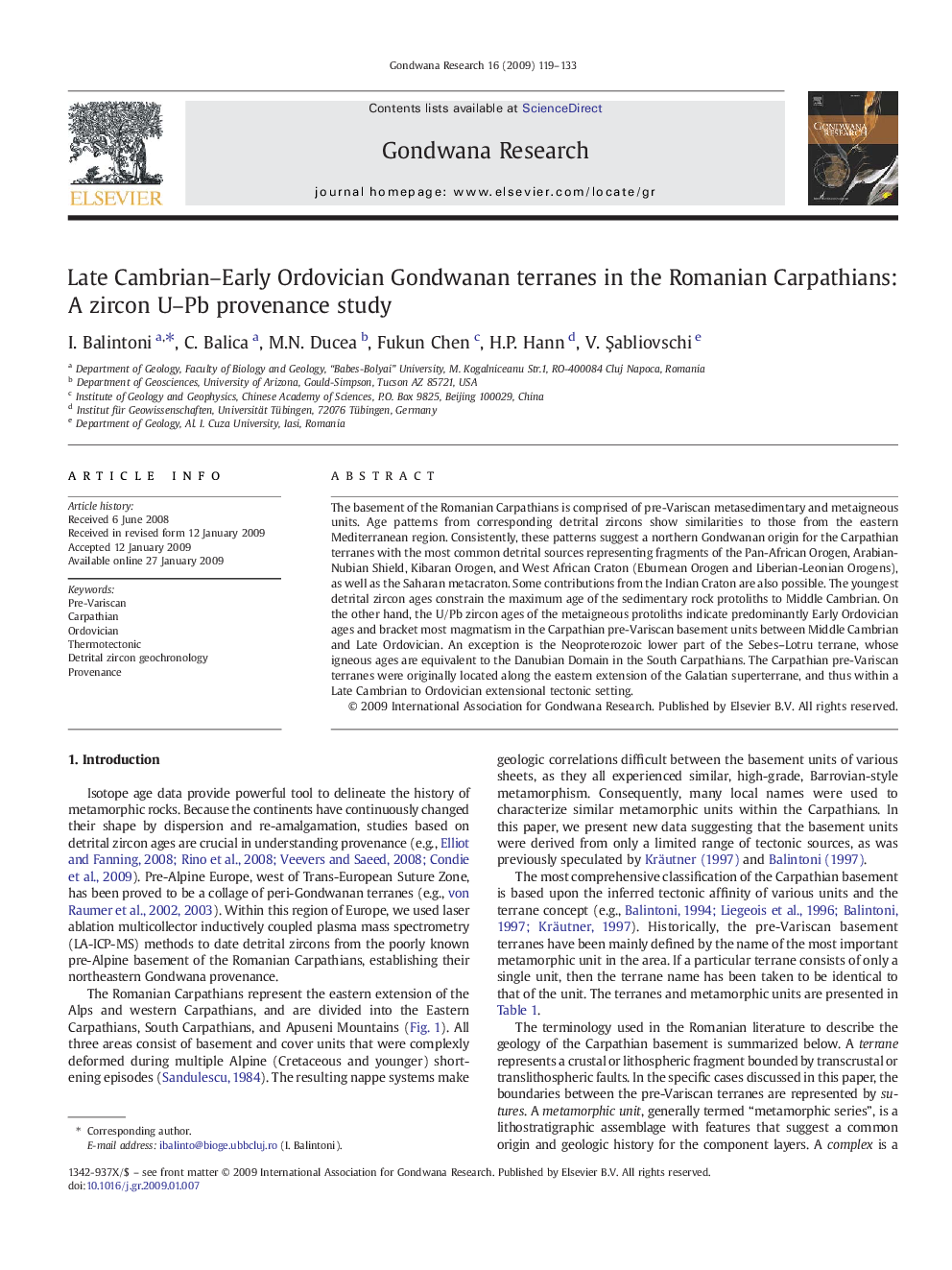| Article ID | Journal | Published Year | Pages | File Type |
|---|---|---|---|---|
| 4727864 | Gondwana Research | 2009 | 15 Pages |
The basement of the Romanian Carpathians is comprised of pre-Variscan metasedimentary and metaigneous units. Age patterns from corresponding detrital zircons show similarities to those from the eastern Mediterranean region. Consistently, these patterns suggest a northern Gondwanan origin for the Carpathian terranes with the most common detrital sources representing fragments of the Pan-African Orogen, Arabian-Nubian Shield, Kibaran Orogen, and West African Craton (Eburnean Orogen and Liberian-Leonian Orogens), as well as the Saharan metacraton. Some contributions from the Indian Craton are also possible. The youngest detrital zircon ages constrain the maximum age of the sedimentary rock protoliths to Middle Cambrian. On the other hand, the U/Pb zircon ages of the metaigneous protoliths indicate predominantly Early Ordovician ages and bracket most magmatism in the Carpathian pre-Variscan basement units between Middle Cambrian and Late Ordovician. An exception is the Neoproterozoic lower part of the Sebes–Lotru terrane, whose igneous ages are equivalent to the Danubian Domain in the South Carpathians. The Carpathian pre-Variscan terranes were originally located along the eastern extension of the Galatian superterrane, and thus within a Late Cambrian to Ordovician extensional tectonic setting.
